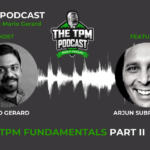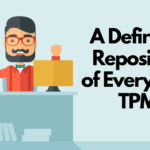Last updated on September 6th, 2024 at 06:43 am
While many of us anticipate that our managers will actively navigate our career paths, advocating for promotions and orchestrating growth opportunities, the reality is more complex. Managers in corporate life, no matter how skilled, face limitations in time and resources.
Climbing the corporate ladder reveals a universal truth—you must take the reins of your career, proactively seeking and creating opportunities while becoming your most fervent advocate. Whether you are a recent college graduate embarking on your first year of employment or a seasoned professional with a decade or more of experience, there is a straightforward yet powerful step to steer your own destiny: Crafting your performance summary.
Benefits of Writing a Performance Summary
This reflective practice prompts you to celebrate your achievements and sparks a deep dive into personal growth and areas ripe for further investment. Here is why taking charge of your performance narrative is a game-changer:
1. Define Expectations: Analyze your performance against expectations, showcasing your ability to self-assess effectively. Aligning your insights with your manager’s perspective ensures a harmonious review process without unexpected surprises.
2. Boost Visibility: Your performance summary is a powerful tool for your current and future managers/mentors to truly understand you. It becomes a dynamic artifact, periodically reviewed to gauge your progress and align yourself with your career aspirations.
3. Stay Focused: Stand out by meticulously analyzing and tracking your performance. This will distinguish you from the crowd and ensure constant alignment with your goals. It is not about rejecting tasks; it’s about maintaining a keen awareness of the value and impact of your efforts.
4. Build Your Brand: Create a year-by-year track record of achievements, a compelling dossier that you can use to advocate for a promotion, a salary increase, or to ensure that management recognizes your contributions.
Your performance summary lets you control your professional narrative and drive your success story.
See also:
– Technical Program Manager Career Path
– The Advantages of Building A Personal Brand As a TPM
Crafting your Performance Summary
Don’t overthink it. Just start writing and keep your performance summary to one page or less. We aim for an annual summary, which you will update throughout the year. The summary has three parts: Key Achievements, Growth Areas, and What’s Next. One golden rule to follow is to keep it concise. Here is a step-by-step approach:
Step 1: (Prework) Gather Data
Retrospect on your deliverables this year and map them to the overall goals for your manager/skip/organization. Collect quantifiable success and performance metrics and note down completion dates. Also, gather feedback received and any areas for improvement.
Step 2: Key Achievements
Highlight 2-3 key deliverables and tie each to business outcomes. Quantify the impact with numbers. Focus on your specific contributions, emphasizing what was above and beyond or particularly challenging. Skip the minutiae—those are a given for a high-performing TPM. You can also include anything outside your role that benefits the company, such as leading a diversity and inclusion committee, hosting monthly TPM tech talks, presenting at a conference, etc.
Example:
“I successfully delivered the New Customer Onboarding feature in March 2024, which reduced onboarding time by 30% (versus the goal of 25%) and received positive user feedback at launch. This launch involved collaborating with four teams in different organizations and geographies. Additionally, I drove performance improvements for the main application by optimizing the database queries, resulting in a 20% increase in efficiency and reducing costs by $50K annually.”
Step 3: Growth Areas
Be self-critical and address any weaknesses based on feedback or introspection. Emphasize constructive growth where you are looking to enhance or hone a skill. Including 1-2 growth areas shows strong self-awareness.
Example:
“In the New Customer Onboarding project, with the large and varied set of stakeholders, I found it challenging to keep them all updated while still ensuring the communication was relevant to them. I plan to focus on enhancing stakeholder engagement by implementing more regular and structured communication channels to ensure all stakeholders are informed and involved throughout the project lifecycle.”
Step 4: What’s next
Your performance summary is the time to lay the groundwork for goals and opportunities you would like in the future. In this section, you will provide a preview of upcoming key deliverables and any opportunities you seek.
Example:
“I want to expand my impact by participating in hiring loops for TPMs across the company and volunteering as an onboarding mentor.”
Conclusion
A clear, concise performance summary enables managers to assess your contributions, impact, and potential effectively. They can then advocate for you and connect you to new opportunities. Regular mid-year and annual check-ins with your manager are not just recommended; they are crucial best practices in your career development journey.
Ready to fast-track your career?
Get personalized advice from ex-Amazon Sr. Mgr. Preetha to raise the bar in your current role and get promoted.
Author

















